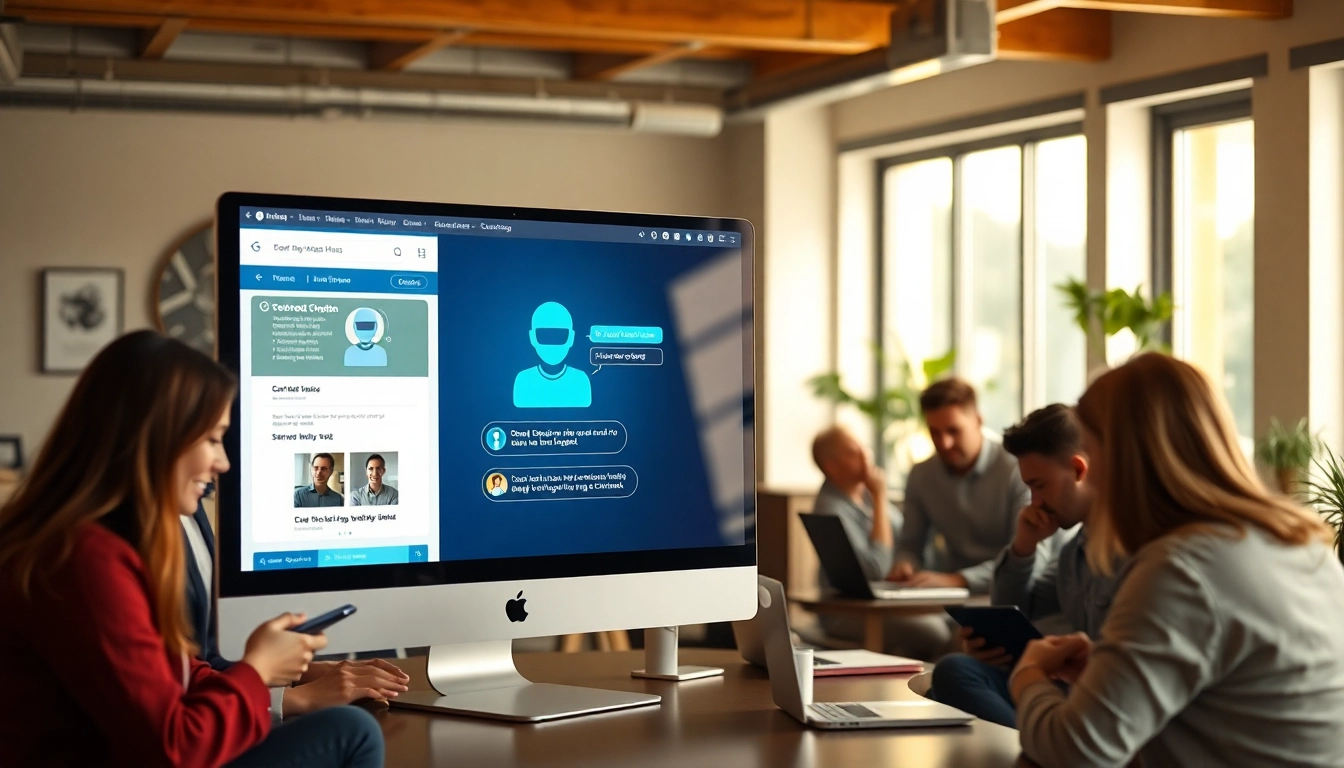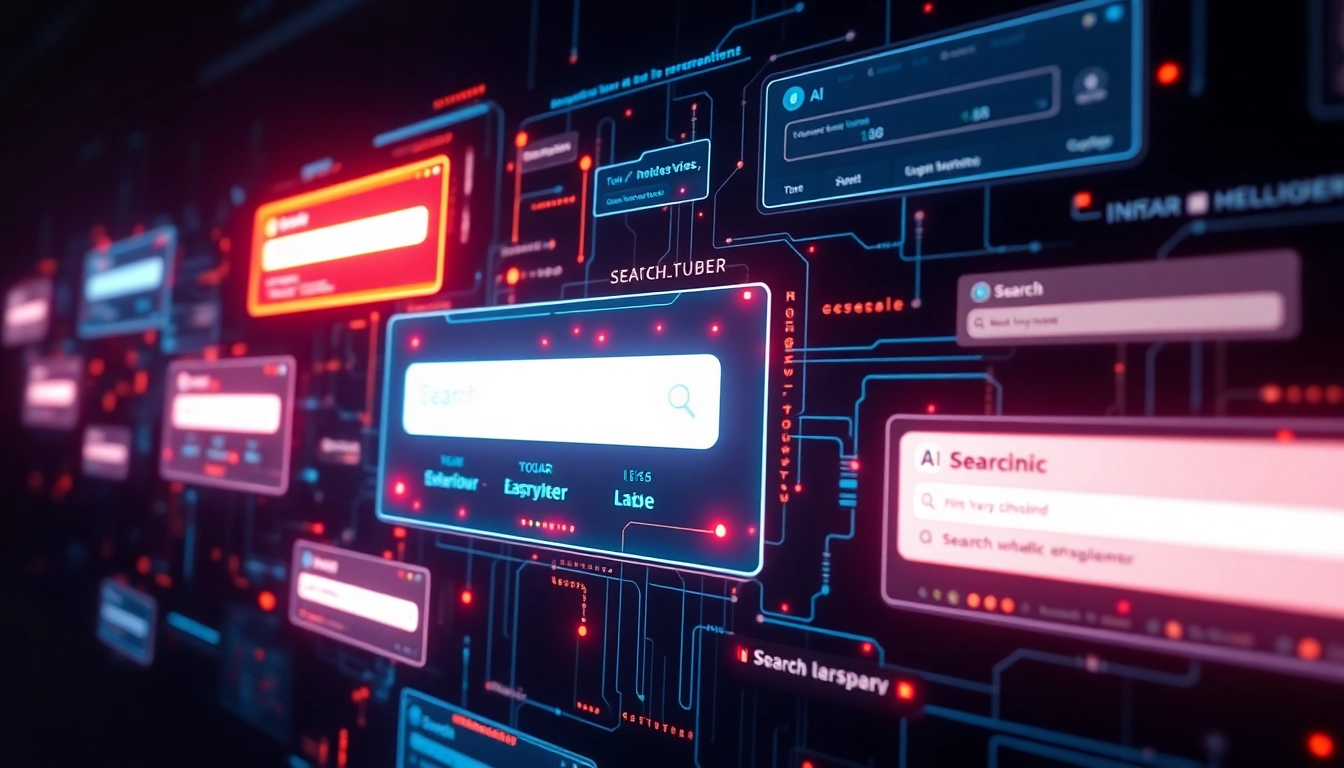Understanding the Fundamentals of a Website Chatbot
What is a Website Chatbot?
A website chatbot is an automated software application designed to simulate human conversation through artificially intelligent processing and natural language understanding. These virtual assistants can be embedded on your website, allowing businesses to interact with visitors in real-time, answer inquiries, and guide users through their journey. Unlike traditional customer support channels, chatbots are programmed to respond to user queries in a conversational manner, collecting information and providing assistance immediately, often without human intervention.
The Importance of Chatbots in User Engagement
In an increasingly digital world, user engagement is paramount. A website chatbot serves as an interactive touchpoint, allowing businesses to engage visitors more effectively than static web pages. Here are some reasons why chatbots are essential for improving user engagement:
- Real-Time Interaction: Chatbots provide immediate responses to user queries, addressing questions that would otherwise lead to frustration and abandonment.
- Accessible Communication: They bridge the gap between traditional customer service channels and users who prefer instant messaging for inquiries.
- Proactive Engagement: A well-designed chatbot can initiate conversations by greeting visitors, answering FAQs, or offering assistance based on user behavior.
Common Types of Website Chatbots
Website chatbots can be classified into several categories based on their functionalities:
- Rule-Based Chatbots: These bots follow predefined scripted flowcharts. They offer consistent, predictable responses based on user inputs.
- AI-Powered Chatbots: Utilizing machine learning and natural language processing, these chatbots can understand context and provide dynamic, relevant responses that evolve with user interactions.
- Hybrid Chatbots: By combining rule-based and AI-powered features, these chatbots offer a rich interaction experience, maintaining human-like conversations while also providing structured answers when necessary.
Benefits of Implementing a Website Chatbot
Increased Customer Support Efficiency
Implementing a chatbot can dramatically improve customer support efficiency. Here’s how:
- 24/7 Availability: Chatbots are always online, enabling users to reach out for support at any time, which considerably enhances the customer experience.
- Reduced Response Time: Immediate responses to simple inquiries mean that customer service teams can focus on more complex issues, thereby optimizing productivity and satisfaction.
- Consistency in Answers: Chatbots ensure that all users receive the same information, eliminating discrepancies that can arise with multiple human agents.
24/7 Availability and User Satisfaction
User satisfaction increases when customers have access to support any time they need it. The benefits include:
- Offering solutions outside of traditional business hours can cater to international customers across different time zones.
- Chatbots manage high volumes of requests instantly, reducing user waiting times.
- By handling routine questions, chatbots leave your team free to concentrate on strategic tasks and complex problems that require human empathy and intervention.
Lead Generation and Conversion Improvement
Website chatbots can serve as potent tools for lead generation and improving conversion rates. Specifically:
- Qualifying Leads: Chatbots can interact with visitors to determine which leads are worth pursuing based on their responses to tailored questions.
- Collecting User Data: Through conversation, chatbots can gather valuable insights and preferences, which can guide personalized marketing efforts.
- Creating a Seamless User Experience: By directing users toward relevant products or services, chatbots can streamline the sales funnel, improving conversion rates.
Best Practices for Designing Your Website Chatbot
User-Friendly Interface Considerations
The design and user interface of your chatbot should prioritize a seamless user experience. Key considerations include:
- Simplicity: Design a clean and uncluttered interface that allows users to see their options clearly.
- Conversational Tone: Use friendly and casual language that aligns with your brand voice to create a more engaging interaction.
- Quick Access to Key Functions: Important phrases such as ‘Get Help’, ‘FAQs’, or ‘Speak to a Human’ should be easily accessible within the conversation flow.
Personalization Techniques for Better Interaction
Personalization enhances interaction and increases user engagement. Implement strategies such as:
- User-Specific Greetings: Customize interactions based on previous interactions or user data to make returning visitors feel valued.
- Tailored Recommendations: Leverage user behavior data to provide suggestions for products, services, or content that align with their interests.
- Contextual Conversations: Allow the chatbot to semantically understand ongoing conversations, adapting its responses to address users’ immediate needs.
Analytics and Feedback Loops for Improvements
To ensure that your chatbot evolves and enhances user experience over time, incorporate analytics and feedback mechanisms that allow you to:
- Monitor Performance: Track metrics such as user satisfaction, average response time, and conversion rates to assess effectiveness.
- Gather User Feedback: Post-interaction surveys can give insights into what users appreciate and where your chatbot may need enhancements.
- Continuous Learning: Regularly update your chatbot’s algorithms based on analytics and feedback to improve its functionality and user experience.
Challenges You May Face with a Website Chatbot
Common Technical Difficulties
While chatbots can bring substantial benefits, integrating them isn’t without challenges. Technical difficulties you may encounter include:
- Integration Issues: Ensuring that your chatbot connects seamlessly with your existing systems and databases can be complicated.
- Natural Language Processing Limitations: Chatbots may struggle with the nuances of human language, leading to misinterpretations of user queries.
- Software Compatibility: Ensuring that the chatbot software is compatible with different browsers and devices is essential for a consistent user experience.
Addressing User Frustrations and Limitations
Users may become frustrated if the chatbot cannot understand or satisfy their inquiries, which poses several challenges:
- Providing a Safety Net: Always offer users an option to escalate conversations to a live agent when the chatbot fails to provide satisfactory answers.
- Training and Updating the Chatbot: Regularly update the chatbot’s knowledge base to improve its ability to respond accurately to user queries.
- Handling Unexpected Questions: Develop contingencies for questions or problems that fall outside the chatbot’s programmed capabilities.
Ensuring Data Privacy and Compliance
As businesses increasingly rely on chatbots that process user data, maintaining data privacy and compliance with regulations such as GDPR is crucial. To navigate these challenges:
- Clear Privacy Policies: Provide transparent information about how user data will be used, stored, and protected.
- Data Encryption: Implement robust encryption protocols to safeguard sensitive user data during transactions.
- User Consent: Ensure users are aware of and consent to data collection practices before interacting with the chatbot.
Future Trends for Website Chatbots
AI and Machine Learning Enhancements
The future of website chatbots is interwoven with advancements in AI and machine learning. These technologies will lead to:
- Improved Understanding of Context: More sophisticated algorithms will enhance the chatbot’s ability to interpret user intent.
- Adaptive Learning: Chatbots will continually learn from interactions, becoming more efficient over time in addressing user needs and preferences.
- Natural Language Generation: Enhanced conversational abilities that allow chatbots to generate human-like responses will greatly improve user experience.
Integrating Voice Recognition Capabilities
With the rise of voice-activated devices, integrating voice recognition into website chatbots will allow for:
- Hands-Free Interaction: Users can interact with chatbots using voice commands, creating a more natural and fluid conversational flow.
- Accessibility Improvements: Voice capabilities can assist users with disabilities, allowing them to engage effectively with your services.
- Enhanced Convenience: Voice-activated chatbots will appeal to users looking for quick, hands-free solutions when multitasking.
Expanding Beyond Traditional Use Cases
Finally, the application of website chatbots is expanding far beyond customer service. Emerging use cases include:
- Interactive Marketing Tools: Chatbots can serve as platforms for interactive marketing, providing personalized recommendations based on user input.
- Educational Tools: Organizations can implement chatbots in e-learning environments to guide learners, answer questions, and track progress.
- Healthcare Assistants: In healthcare, chatbots are being utilized for patients to schedule appointments, access information, and receive reminders for medications.



